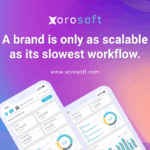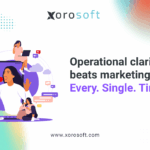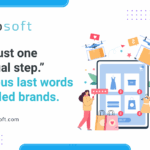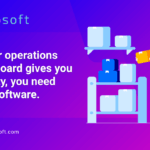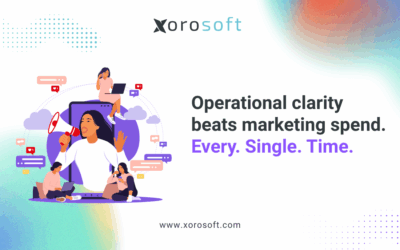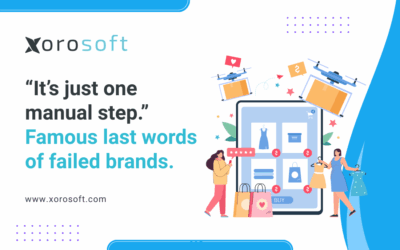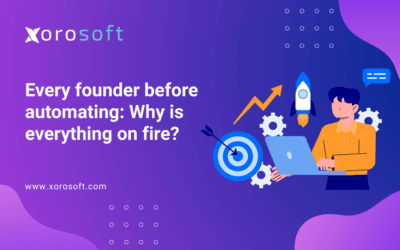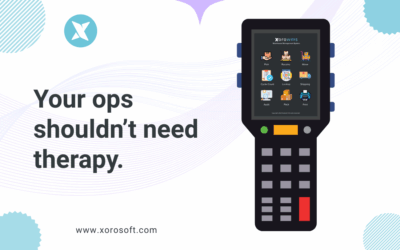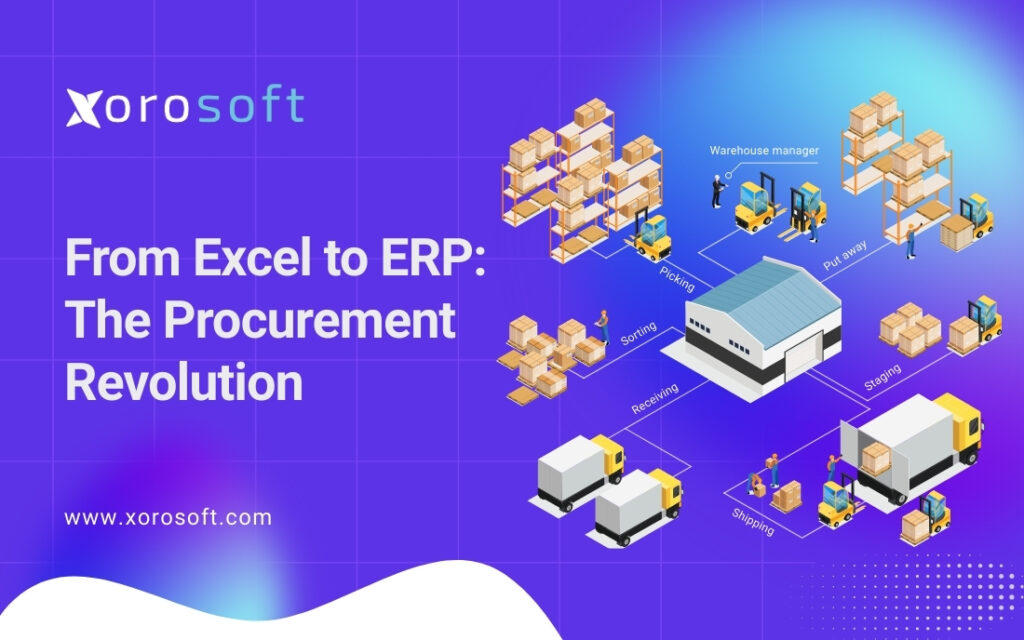
Why ERP Procurement Software Is Replacing Spreadsheets for Good
ERP procurement software is rapidly replacing spreadsheets as the go-to solution for growing businesses. While Excel has long been the default tool for managing purchasing, it’s simply not designed for the demands of modern operations. As your company scales, spreadsheets become prone to human error, versioning issues, and missed approvals—turning procurement into a frustrating, time-consuming process.
Worse, disconnected purchasing data leads to stockouts, late deliveries, and accounting bottlenecks. What once felt manageable now creates costly chaos. That’s why more companies are making the shift to cloud-based ERP procurement software. It centralizes procurement, automates repetitive tasks, and connects purchasing with inventory, finance, and warehouse operations.
Ultimately, this shift isn’t just about better tools—it’s about enabling your team to move faster, avoid errors, and focus on strategic growth. In short, it’s a smarter way to scale.
The Hidden Costs of Spreadsheet Procurement
On the surface, spreadsheets appear simple and flexible. However, as your procurement volume grows, they start breaking down—silently but significantly.
For example:
-
POs are delayed or lost in disconnected files and email chains
-
Duplicate orders happen when teams work on different versions
-
Inventory overstock or stockouts occur due to poor forecasting
-
Vendors are mismanaged with no consistent performance data
-
Finance teams struggle with manual reconciliation
-
No audit trail exists, causing compliance concerns
To be clear, none of these issues are uncommon. Instead, they’re the natural result of disconnected systems. Therefore, if you’ve experienced these symptoms, your current system is likely holding you back.
Moreover, as procurement volume increases, the risk and cost of mistakes rise exponentially. Consequently, relying on Excel becomes more of a liability than an asset.
What Is ERP Procurement Software?
ERP procurement software is a centralized system that automates and streamlines the entire purchasing lifecycle—from vendor management and purchase requests to order approval, receiving, invoicing, and reporting.
Because of this integration, your teams work in sync, decisions are made faster, and operations become much smoother.
Key capabilities typically include:
-
Real-time inventory integration
-
Purchase order automation
-
Custom approval workflows
-
Vendor performance tracking
-
Seamless invoice matching
-
Integrated financial reporting
As a result, procurement becomes more than just a backend process—it becomes a growth lever. In fact, businesses using modern procurement tools often report stronger cash flow control and better vendor terms.
Top Benefits of ERP Procurement Software
Adopting an integrated ERP solution for procurement delivers immediate and long-term advantages. Furthermore, it positions your team for scalability.
✅ Automated Purchase Order Generation
ERP systems track inventory levels and auto-generate POs when stock hits reorder points. As a result, this ensures that you always order just in time—avoiding stockouts and excess inventory.
Additionally, the system can consider sales trends and supplier lead times, allowing you to forecast with more precision.
✅ Faster, Smarter Approvals
With custom workflows, POs can be routed automatically based on item type, department, or value. Therefore, this reduces approval delays and boosts accountability.
Besides that, audit trails keep a record of who approved what—making compliance audits far less stressful.
✅ Vendor Insights at Your Fingertips
Track supplier reliability, lead times, fill rates, and cost history. For example, use this data to negotiate better deals and optimize sourcing strategies.
In addition, you can quickly identify underperforming vendors before they affect your supply chain.
✅ Seamless Invoice Matching
Your team can automatically match received goods to purchase orders and supplier invoices. Consequently, the reconciliation process becomes much faster and more accurate.
Instead of manual spreadsheets, your AP team gets an automated workflow that saves hours each week.
✅ Unified Accounting Integration
Every procurement transaction flows directly into your GL, AP, and budget reports. In turn, manual entry errors disappear, and finance teams close books faster.
Not only does this reduce friction—it enables real-time visibility into company-wide spend.
Why ERP Procurement Software Beats Manual Processes
Manual procurement processes are filled with friction. They require constant coordination between teams, frequent backtracking, and repetitive data entry.
By contrast, ERP procurement software provides:
-
Transparency: Everyone sees what’s been ordered, received, and paid
-
Speed: No more email chains or spreadsheet updates
-
Accuracy: Reduce human errors across the board
-
Scalability: Add vendors, SKUs, and locations without chaos
-
Strategic control: Use data to plan smarter and reduce costs
Even though spreadsheets seem manageable in early stages, they quickly become liabilities. As a result, many businesses switch before operational risk grows.
Moreover, as teams grow, the cost of a fragmented process increases dramatically. After all, procurement impacts every part of the business.
How Xorosoft ERP Procurement Software Improves Purchasing
Xorosoft ERP is a modern, cloud-based solution built for companies that need to eliminate procurement chaos.
Here’s why Xorosoft is the right ERP procurement software for you:
🔁 Inventory-Driven Purchase Planning
Automatically suggest or trigger POs based on real-time stock data, reorder rules, and demand trends. Moreover, the system adapts as your business grows.
As a result, you’re no longer relying on reactive reordering or guesswork.
🤝 Vendor Performance Management
Track and analyze supplier metrics like cost changes, delays, and order accuracy over time. In addition, use this data to compare suppliers and improve decision-making.
Hence, you strengthen your supply chain before it breaks.
✅ Custom Approval Workflows
Define multi-level approvals based on thresholds, departments, or supplier categories. As a result, teams stay accountable without bottlenecks.
Additionally, alerts keep everyone on task—without the need for micromanagement.
🧾 Seamless PO-to-Invoice Flow
Receive goods into the warehouse and reconcile invoices directly within the system—eliminating back-and-forth. Therefore, finance always stays in sync.
This also prevents overpayments and late fees.
📦 Built-in WMS and Accounting
Unlike other ERPs, Xorosoft includes its own Warehouse Management System and accounting modules—no bolt-ons or third-party tools. This makes implementation smoother.
Furthermore, it reduces long-term costs and integration risks.
🌐 Shopify and EDI Integrations
Sync procurement across your e-commerce store, 3PL, and suppliers with native integrations. Consequently, your data stays unified.
To illustrate, orders placed via Shopify can be automatically sent to procurement, inventory, and accounting teams in real time.
Xorosoft is proudly rated #1 in Ease of Use on G2 and available on the Shopify App Store for seamless e-commerce integration.
Real Results from Teams Who Switched
Companies that adopt Xorosoft’s ERP procurement software report:
-
70% faster PO approval times
-
3x improvement in vendor negotiation leverage
-
50% fewer stockouts
-
90% reduction in invoice matching errors
-
Time savings across finance, operations, and procurement
In fact, these improvements lead to smoother operations, better supplier relationships, and improved margins.
Additionally, teams report improved morale because manual admin is eliminated.
